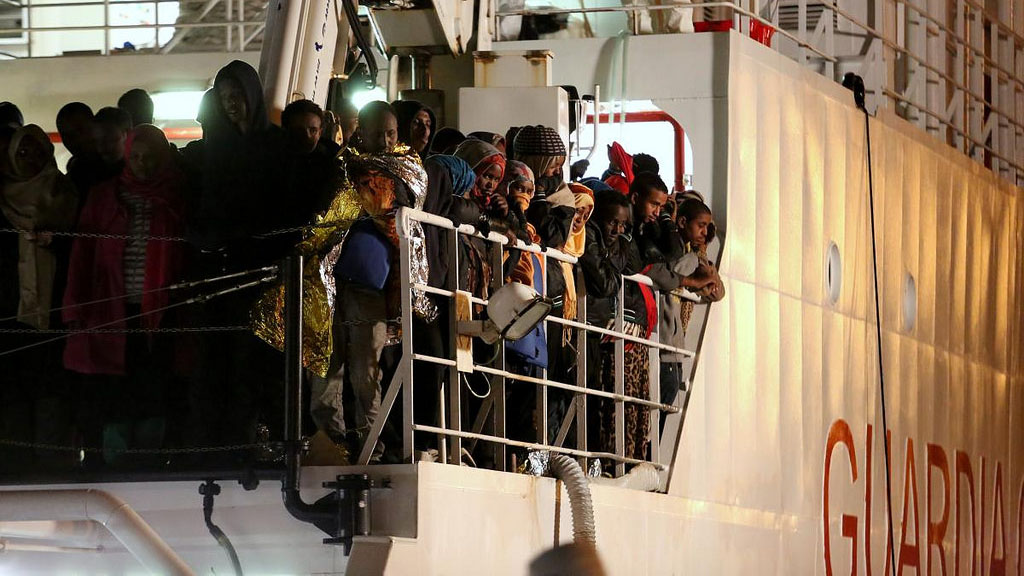What can be done to address the refugee and migration crisis in the Mediterranean, which has led many thousands of people from Africa and the Middle East to risk and lose their lives in a desperate attempt to reach Europe?
Although EU member states recently pledged to devote some additional resources to “search-and-rescue” missions, the dominant response has been to place greater emphasis on security, enforcement and rapid returns.
France and the UK have even stated that military action should be undertaken to identify and destroy the former fishing boats that are used to transport refugees and migrants across the Mediterranean.
By contrast, humanitarian and human rights organisations appear to have reached a consensus that one of the best ways of averting the need for people to take hazardous journeys across the Mediterranean would be to provide them with safe and legal means of moving to Europe from their countries of origin and transit.
In the words of a joint statement issued by a number of groups, including the International Organization for Migration (IOM) and the UN’s refugee agency, UNHCR, the current crisis in the Mediterranean could be addressed “by creating sufficient channels for safe and regular migration, including for low-skilled migrant workers.”
In a detailed interview with The Guardian last week, François Crépeau, the UN Special Rapporteur on the human rights of migrants, advocated a dual approach, involving a far higher number of resettlement places for refugees, as well as the establishment of migration arrangements for people who want to go to Europe to look for work. He argued that enabling migrants and asylum-seekers to make use of such legal channels would greatly reduce their need to rely on smugglers.
First, it is by no means clear that the governments - and more significantly the electorates - of Europe would sign up to the notion of creating more legal migration channels, especially if the result would be the arrival of more low-skilled migrant workers. Of course, many sectors of the European economy are highly dependent on such people, but in the toxic atmosphere that currently surrounds the migration debate in most EU member states, it would take a very brave political leader to acknowledge this reality and organise the arrival of migrants now stranded in North Africa.
Second, more thought needs to go into the selection procedures that would be used if regular migration channels were to be established for the complex and sometimes almost indistinguishable mixture of refugees, asylum-seekers and migrants wishing to enter Europe. Would separate procedures be needed for each of these groups? Who would administer them, how long would they take, and what would happen to applicants while they were waiting to hear if they had been admitted to Europe?
Greater clarity is also required with respect to the admission criteria that would be used by EU states. Would priority be given to the most vulnerable applicants? If so, how would regularised migration differ from refugee resettlement, and what programmes would be needed to assist those with special needs, such as survivors of sexual violence, unaccompanied children and people with disabilities?
How would European countries choose amongst the many low-skilled migrants who want to move to the continent? Or would they simply ‘cherry-pick’ those applicants with the best education and skills? If so, many thousands would be left behind in transit countries such as Libya and Tunisia, providing a continued clientele for the rapacious smuggling networks that have emerged throughout the Mediterranean.
More generally, even if some European governments could be persuaded to establish regular migration channels for those contemplating dangerous journeys across the Mediterranean, the number of people wishing to enter those channels would surely be far in excess of the number of places available. With supply outstripping demand, many would still be left with no other option than smugglers’ boats.
Such channels may well act as a “pull factor,” encouraging greater numbers of people to head for Europe from countries affected by armed conflict, poor governance and weak economies. Asylum-seekers and migrants admitted by safe and legal means would be well-placed to provide compatriots in countries of origin and transit with the information, money and motivation needed to move towards Europe.
The notion of regularising refugee movements is by no means a new one, and has in the past provided an important means of enabling people from war-torn states to begin more peaceful and prosperous lives in other countries.
In the 1980s and 1990s, for example, more than 400,000 refugees from Vietnam and other Indo-Chinese countries were resettled from countries of first asylum in Southeast Asia to other parts of the world. An even greater number were able to participate in an “orderly departure programme” that enabled them to move directly, legally and safely from their country of origin.
These and other types of regular migration programmes should now be scrutinised in greater depth to determine the extent to which they might reduce the loss of life and human suffering currently witnessed in the Mediterranean. But it would be illusory to begin that process on the assumption that such programmes represent a quick, easy or politically acceptable approach to the region’s refugee crisis.
jc/ks/ag





